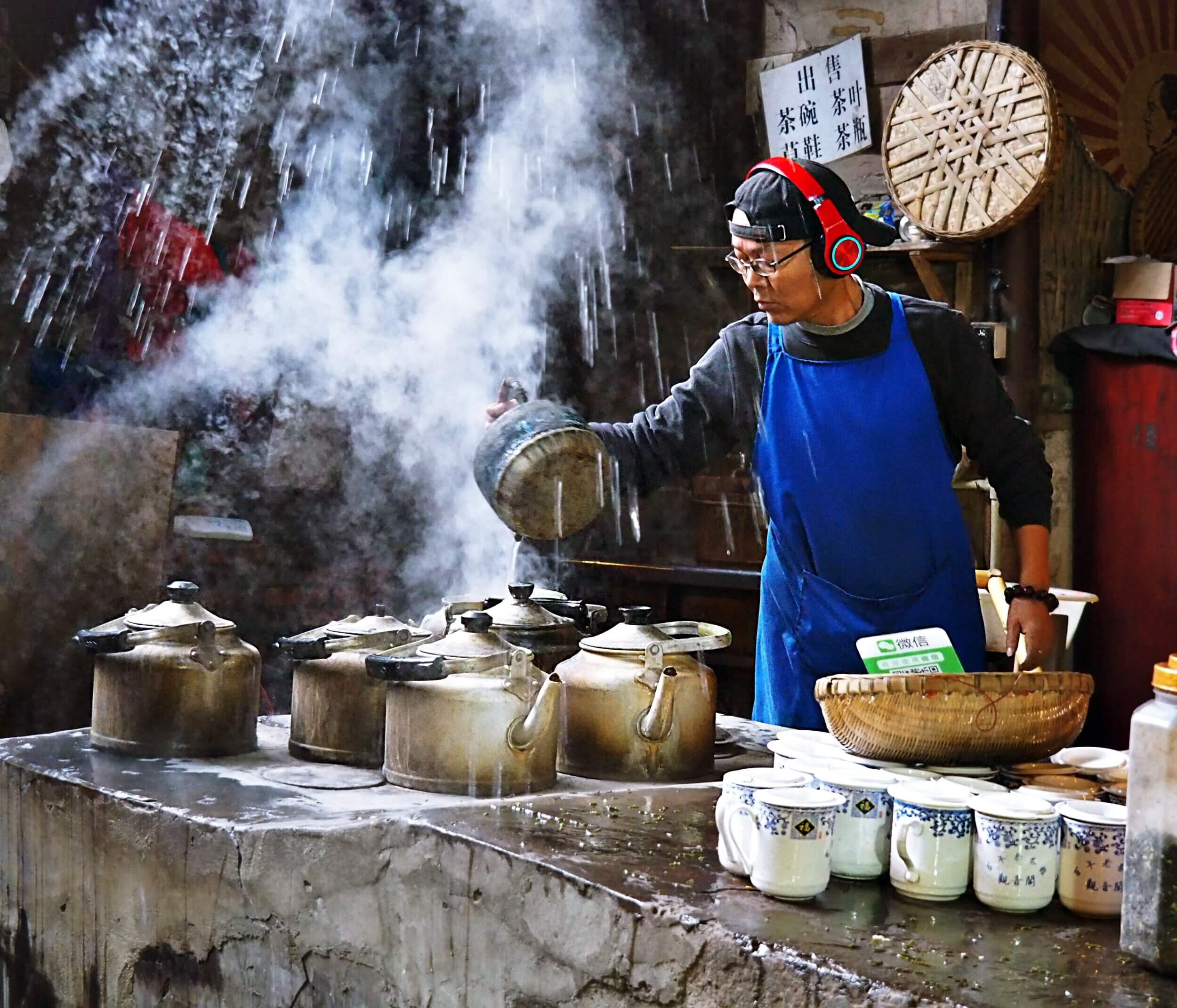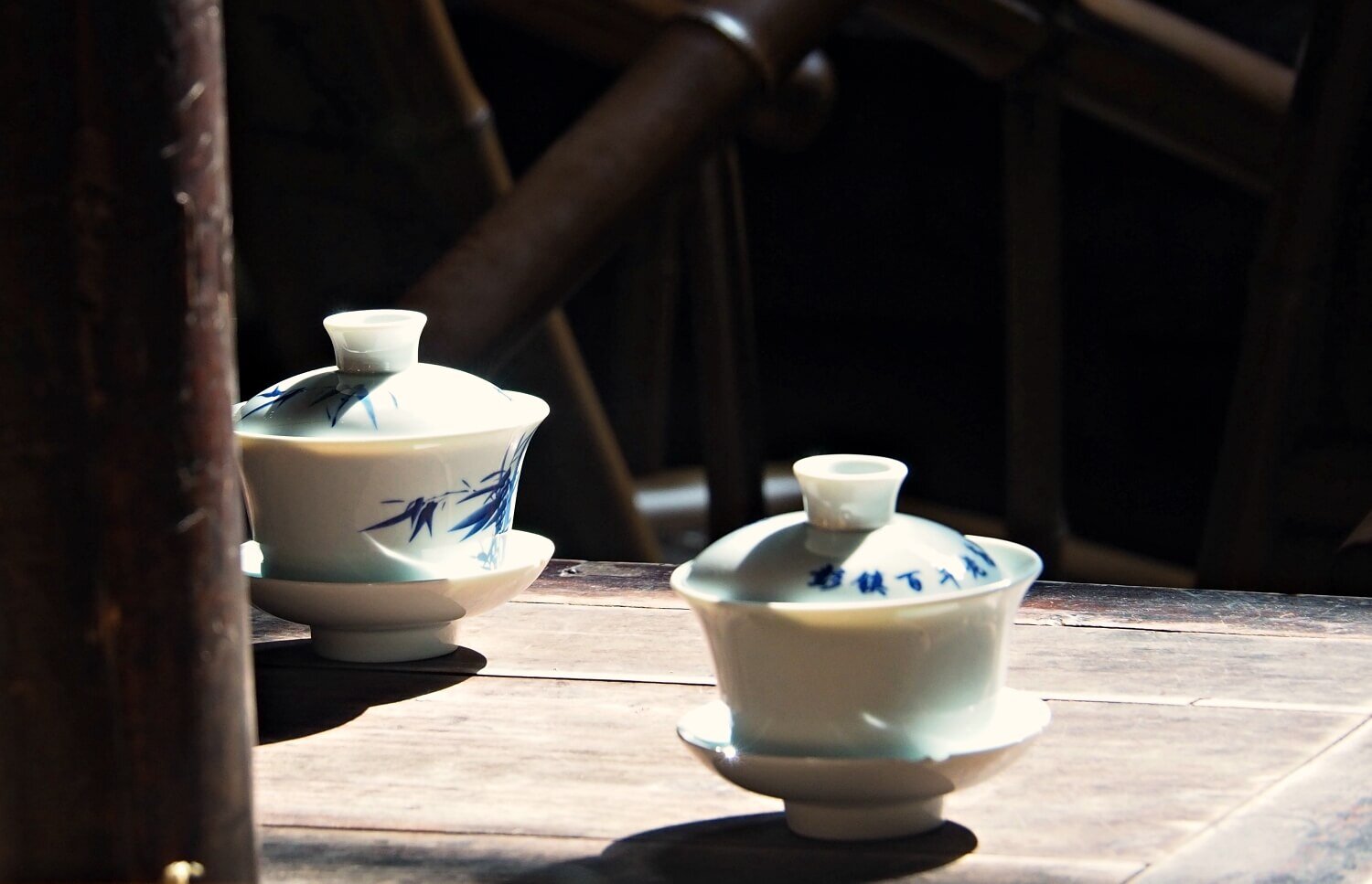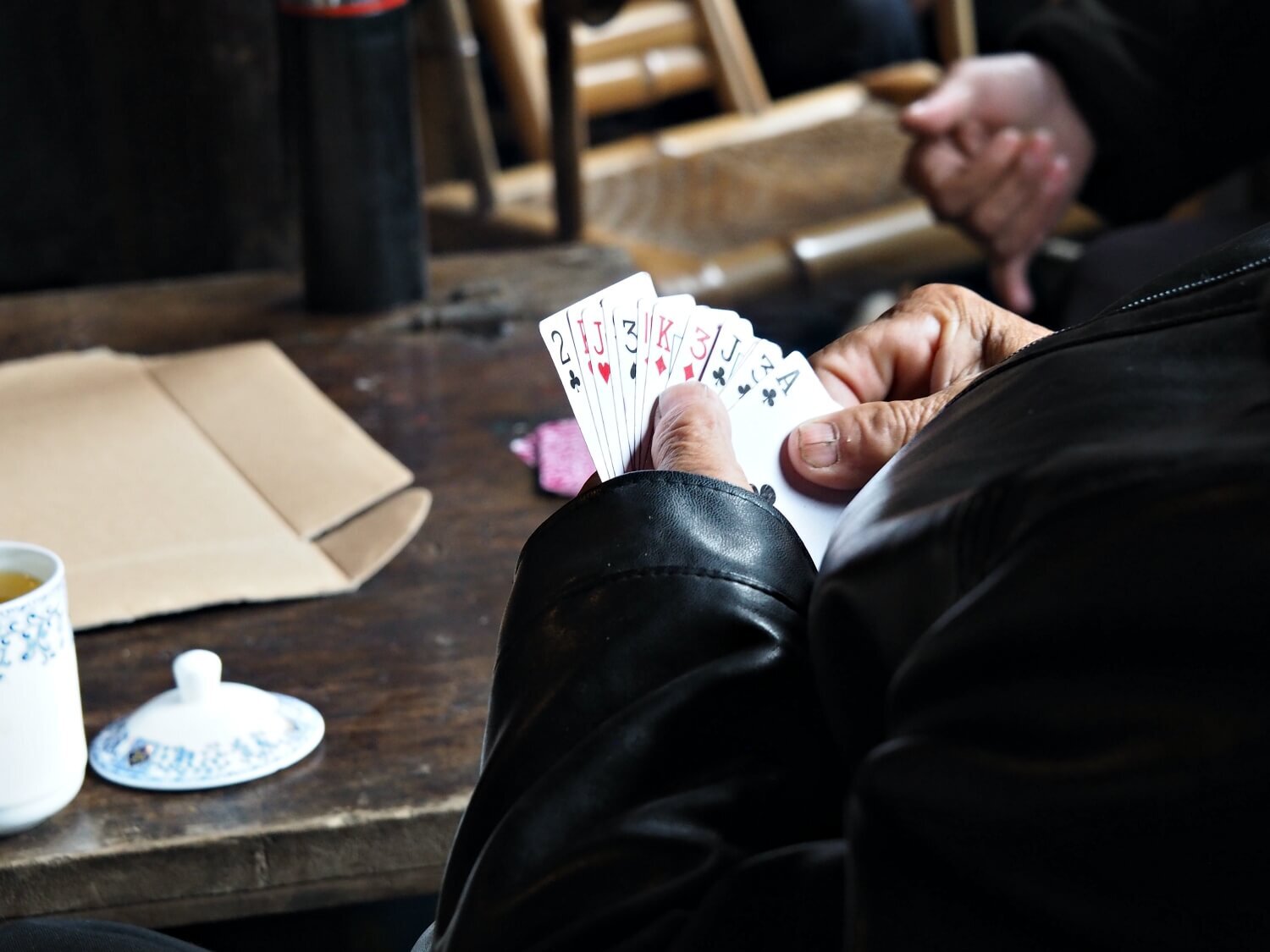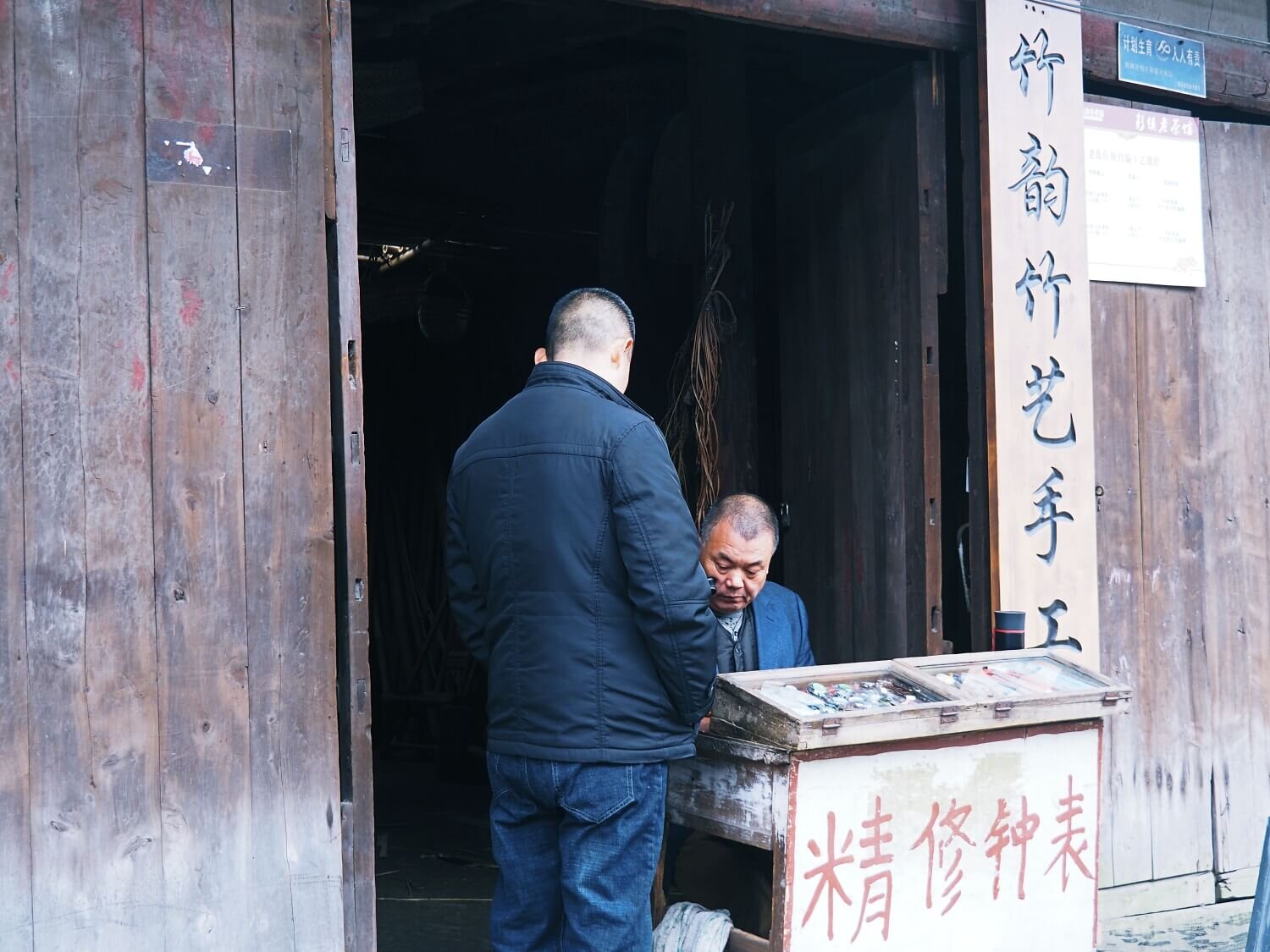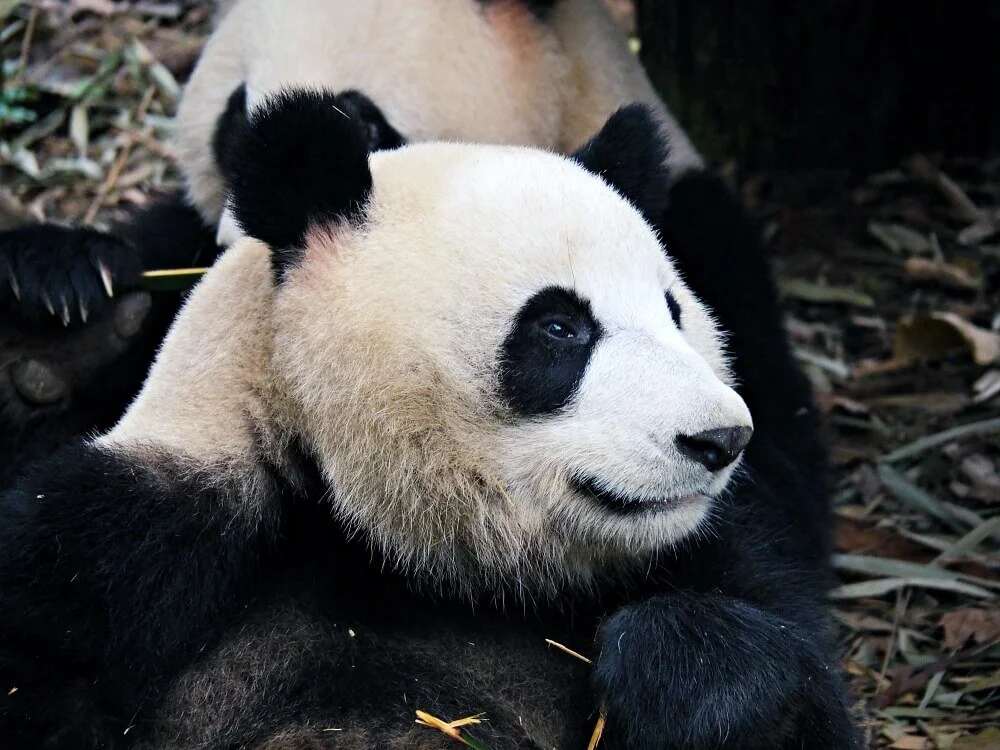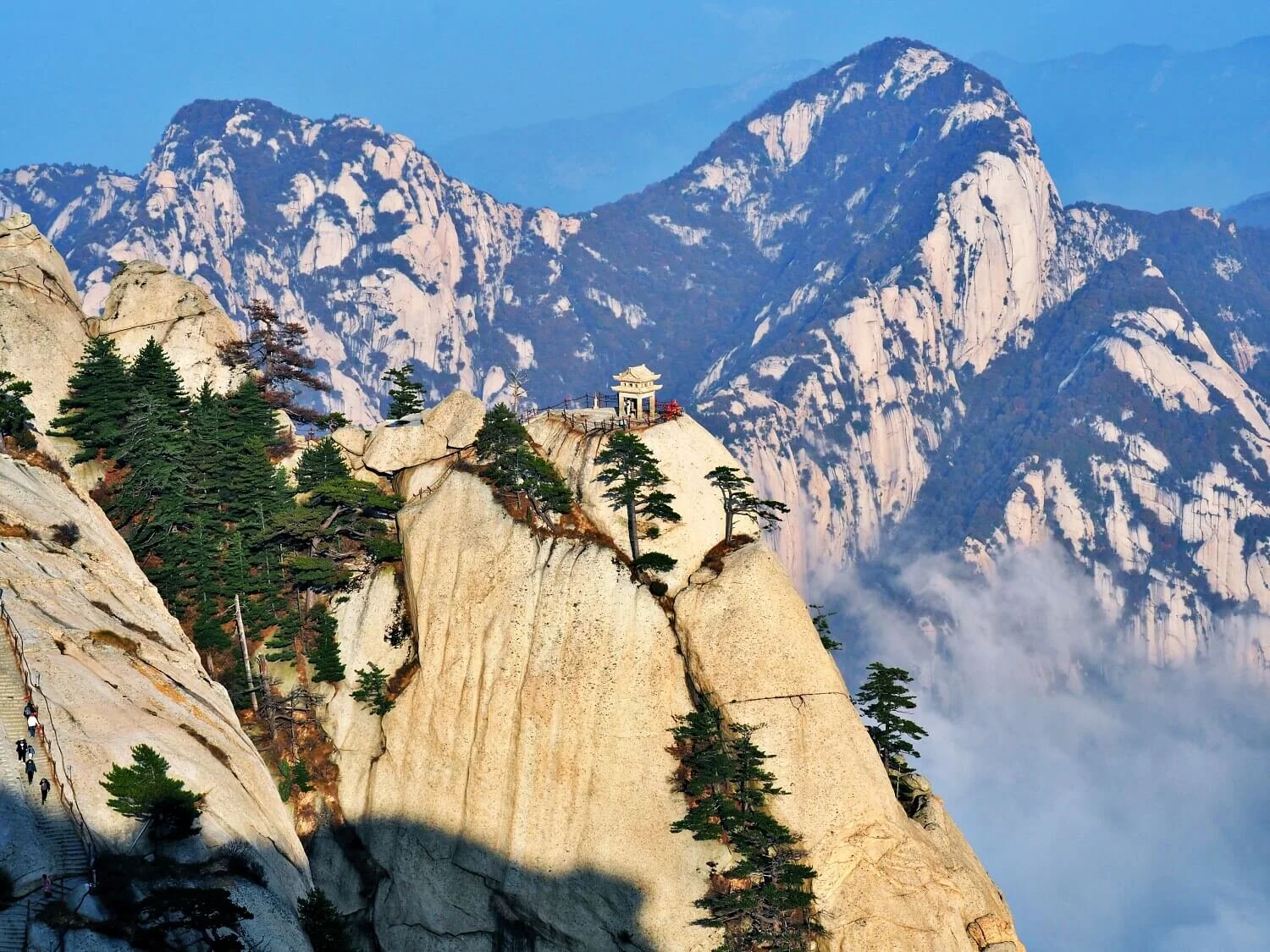In photos: Guanyin Pavilion, China's oldest tea house, Chengdu
Looking to escape the buzz of China’s modern cities? A taxi ride from Chengdu is Pengzhen town, with a charming 300 year old tea house and a local community happily preserving their ancient way of life.
Pengzhen old town is freezing. And when I say freezing, I mean so cold that my eyeballs feel like small icicles rolling around in my head. The town is blanketed in a low-hanging thick grey mist, which makes me immediately think of the horror movie The Mist and does nothing to ease my discomfort.
As we search around for the Guanyin Pavilion, my fingers start to go numb. I thought that a famous old Chinese tea house would be easy to find, but after 15 minutes, it becomes clear that we have no idea where it is. Maybe we are too early? It’s only 06:45am after all. Perhaps it’s not even open yet? Are we in the wrong place? And finally, why are we risking frost-bite just to watch some people drink tea?
Despite the temperatures, winter is an epic time to visit China. Check out our guide to exploring China in winter.
We ask some passersby and immediately discover that we are simply in the wrong place. (Damn you Google Maps - you have failed us once again in China!) The men gesture down a narrow street and after thanking them profusely, we follow their directions and finally find the teahouse.
The sun is only just peeking above the horizon and yet Guanyin Pavilion is already packed to the gills with elderly Chinese men, most of whom apparently arrived at 4:00am. We later discover that some people even walked over 10km to get here! Immediately we realise that we have a) arrived extremely late in comparison and b) clearly lack the dedication of the Chinese when it comes to drinking tea, despite the fact that we are both British.
The town of Pengzhen, located almost one hour outside of Chengdu, the capital of Sichuan province, is home to what is said to be China’s oldest teahouse. Reportedly around 300 years old, the Guanyin Pavilion sits in the centre of a few narrow and historic streets where everyday life carries on unchanged from hundreds of years ago.
The teahouse also doubles as a community centre of sorts and is the beating heart of this tiny local population. The faithful customers, mostly elderly and retired men who are wrapped up warmly against the cold in flat caps and overcoats, frequent Guanyin Pavilion everyday without fail.
Watching over these dedicated patrons is the benevolent smiling face of Chairman Mao Zedong surrounded by solar rays - one of the many crumbling and faded Communist era paintings of China’s founder that decorate the wooden walls of the teahouse. Under his observant eye and in the dim glow of the bare lightbulbs dangling from the wooden beams above, some of the men play cards, smoke pipes or simply stare into the middle distance as if contemplating their long lost youth.
Others fall asleep in their bamboo chairs or chat animatedly as a Chinese soap opera plays in the background on a flat-screen television - the only real sign of the modern world in this place, aside from the bright red headphones and a backwards baseball cap worn by Li Quiang, the manager of Guanyin Pavilion.
Whilst somewhat shielded by the elements, the stone floor of the building is freezing and as the chill steadily seeps up through my feet, my teeth begin to chatter. I am turning into a human ice sculpture. A kindly lady pulls us aside and offers us a steaming hot flask of jasmine green tea, which we gratefully accept. We sink into two bamboo chairs and wrap our hands around the blue and white porcelain cups, taking a moment to just relax, warm up and people watch.
Check out everything we learned after two months travelling around China.
A cup of tea at Guanyin costs 2 yuan (a whopping 23p) whilst a whole flask is only 10 yuan (just over £1). In a country where people drink 2.1 million tonnes of tea a year and a Starbucks opens up a new store every 15 hours (sad times), dirt-cheap prices like this are becoming extremely rare.
The tea at Guanyin tastes sweet, light and refreshing and not overpoweringly floral (basically nothing even resembling a jasmine tea bag). The unique taste is attributed to a number of things, from the blend of flowers and tea leaves that are grown below the Tibetan plateau, on the foothills of the Himalayas, to the water that comes from a well, deep inside the tea house. All I can say is, it is a damn good brew.
Ahhh…now that is better.
I take a long sip from my cup and look around. Although off the traditional tourist trail, Guanyin Pavilion has recently become a magnet for amateur Chinese photographers. Many of them appear to be as interested in capturing images of us as they are of the teahouse itself! One of them has a camera with a humongous lens and as he gestures for me to pose, a dazzling flash goes off in the gloomy surroundings. All this moving around keeps me warm so I find that I don’t really mind being directed into cheesy poses. Although if I’d known, I would have dressed up.
We chat to these shutterbugs and discover that they are from all over China. One of the men calls his daughter and asks me to speak to her. She explains that her dad wants a photograph with me. Would this be alright? “Sure”, I say and obligingly pose for several selfies. This must be what it’s like to be a celebrity (albeit a tired and badly dressed one).
Tea in China isn’t just a national obsession (which you can see in the thermos flasks of hot tea that people carry with them everywhere) it is also an art. Tea tasting is a hugely popular activity and there are many small shops dedicated to the art of making tea. Customers often sit down with tea sellers for an hour or more and taste different teas and infusions before deciding which ones they wish to purchase.
A traditional tobacco pipe maker at Guanyin Pavilion teahouse.
In the simple Guanyin Pavilion, the complex art of tea drinking is left to one side. Instead, we are treated to an amazing display in the dramatic art of pouring (or almost throwing) boiling water. Different employees have various tricks they can perform, but the most incredible display today is by Li Quiang. Steam and water droplets explode upwards in an arc and astonishingly everyone (including him) is left unharmed.
As the weather warms up outside, more patrons gather. Food is being prepared, possibly for lunch, and we look at each other and realise that we are suddenly ferociously hungry. Standing around in the cold will do that to you.
Outside, the street has come alive. Restaurants and shops are opening and the delicious aromas emanating from the steaming and bubbling pots and pans stirs our appetites further.
We follow our noses and sit down at a restaurant where the owner says he can vegetarianise a traditional breakfast noodle dish for us. Piping hot noodles, chopped scallions and tofu all steeped in an oily chilli-infused broth promptly arrives and we slurp it down thankfully, feeling the warmth radiate outwards from our bellies to our frozen hands and feet.
Once sated, we decide to explore the few small streets that make up Pengzhen ancient neighbourhood. The town predominantly consists of one-storey wooden homes and shophouses, where time-worn trades still survive.
We pass a shop that makes and sells noodles and another that seems to specialise in fixing watches and other electronic items.
The great thing about Pengzhen old town is that it is actually old. Most ‘old towns’ in China have been knocked down and rebuilt so that they look old - part of the common Disneyfication of historic towns in China that usually comes with a high entrance fee for tourists. But in Pengzhen, what you see is the real deal.
Lunchtime is fast approaching and a queue of customers wait patiently to serve themselves rice from a bamboo steamer at The Heavenly Table restaurant - formerly a communist-run canteen that used to serve free food to workers.
Our wanderings take us further into the town and we stumble across a shop belonging to the octogenarian local doctor, who practices traditional Chinese medicine.
Dried herbs, flowers and other plants hang from the walls and the ceiling alongside preserved body parts of various animals. Nearby, two old water bottles contain a remedy of pickled snakes. At this point, I begin to lament my lack of Mandarin as I would love to know what ailments this concoction cures. Maybe there is something for terrible circulation and icy cold hands?
We end our stroll near another teahouse, which has a dog carcass hanging outside.
The consumption of dog meat in China is not as common as everyone seems to think. An estimated 10 million dogs are killed each year for China’s dog meat trade, however the meat is only eaten infrequently by less than 20% of the population. A survey conducted in 2016 found that nearly 70% of the population had never consumed dog meat whilst more than half of the respondents (51.7%) believe the trade should be completely banned.
Some cities in China such as Shenzhen and Zhuhai, have now completely banned the consumption and production of dog meat. As of April 2020, Chinese authorities have declared that dogs should be treated as pets and not livestock.
We decide to walk back to the Guanyin Pavilion and take one more look around before leaving Pengzhen. On the way back we pass the local barber, busy at work.
It is midday now and to our surprise the teahouse has mostly emptied out, save for a few customers now sitting in the sun outside. The army of photographers has gone. Shafts of sunlight stream through the roof and for the first time I can just about see the murals and decorations that are a reminder of the previous incarnation of this building as a temple during the Ming dynasty, before it was converted over a century ago.
The sunlight feels pleasantly warm after the freezing start to the day and we take a moment to just sit down and absorb the quiet atmosphere.
Visiting Pengzhen is like travelling back in time. Instead of the flashy skyscrapers and buzzing, crowded cities so synonymous with China’s rapid modernisation, we caught glimpses of the lives of ordinary people: a community staunchly preserving its heritage and the old traditions of China that are swiftly being consigned to history.
How to get to Pengzhen and Guanyin Pavilion Tea House
The best way to get to Pengzhen is by taxi - we took a Didi (the Chinese version of Uber) from Chengdu which cost 88 yuan (£10) one way and took us 50 minutes. It is best to get to the teahouse early in the morning as this is when it is at its busiest.
If you are going to visit to take photographs, please remember to be respectful. Ask people’s permission before photographing them and make sure that you buy a cup or flask of tea when you go there. The tea is very tasty and really isn’t expensive, plus you end up supporting the business as well. A win-win for everyone!
The real beauty of this place is just sitting and people watching. We also managed to talk to people via our translation app (a little clunky, but still some conversation is better than nada) so if you speak Mandarin, this is the time to use it!
Our trip to this tea house was one of our best experiences in China. Where’s the most atmospheric place that you’ve had a brew? Drop us a line in the comments!
Looking for more travel inspiration? Click here to discover more of our favourite places around the world.
If you liked this post, Pin it!
